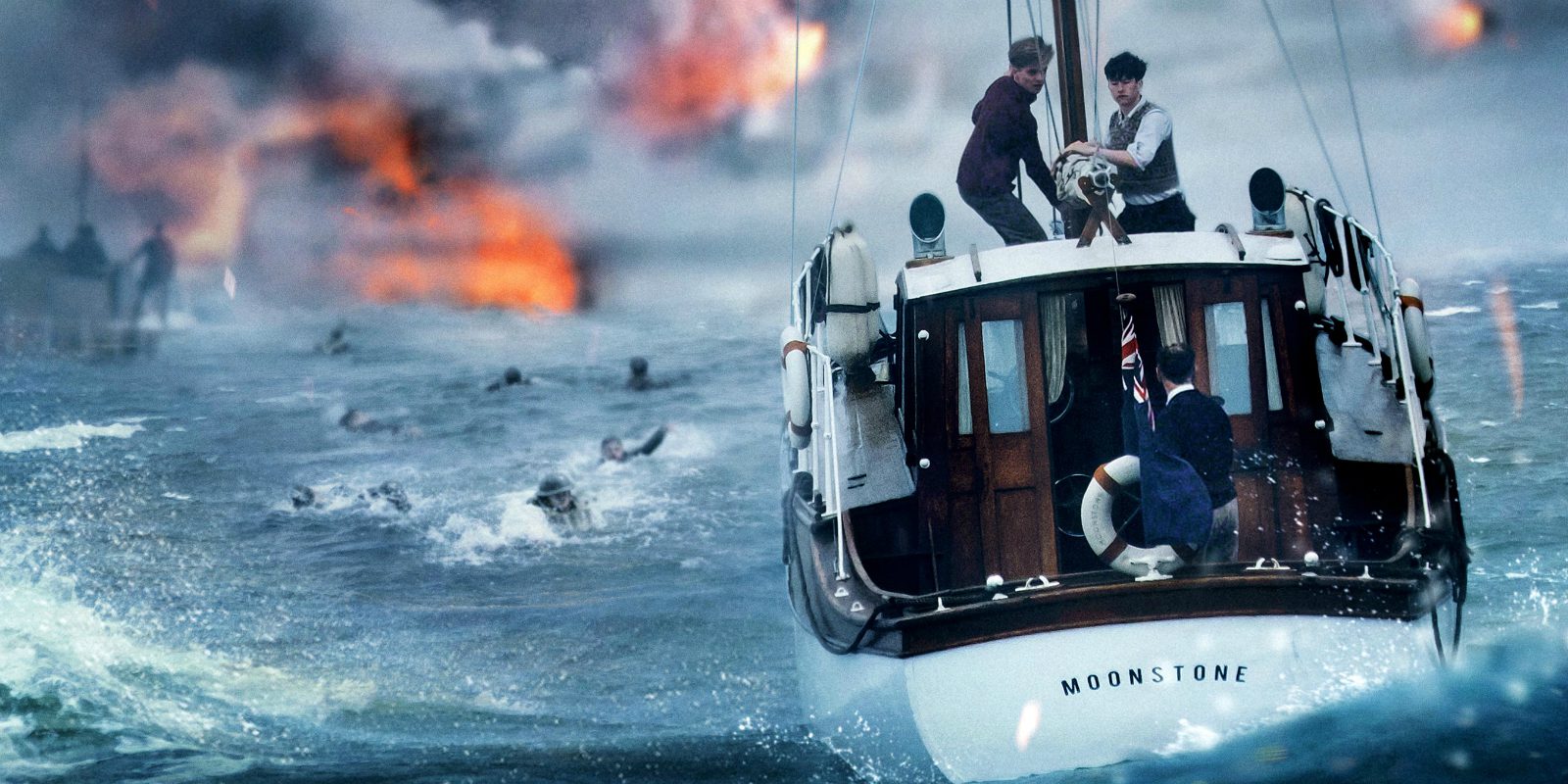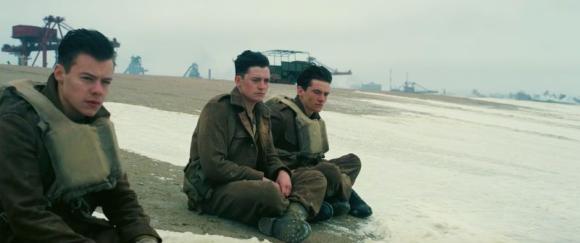Was The World’s ‘Northern-Most Island’ Erased From Charts?
by Kevin Hamilton (University of Hawaii) In 2021, an expedition off the icy northern Greenland coast spotted what appeared to be a previously uncharted island. It was small and gravelly,...




The movie is, as one might expect, based on the evacuation of over 300,000 British and French troops over 8 days in June, 1940 from the beaches of Dunkirk, France — one of the greatest maritime rescues in history. While under attack by German fighters and dive bombers, an entire British Army was saved by a mix of Royal Navy destroyers and other naval vessels, as well as by an armada of close to a thousand private and commercial craft, sailing back and forth across the channel to ferry the troops to safety.
How does one capture both the very human experience of being on the beach and on the boats and ships at Dunkirk, while also communicating the vast sweep of the evacuation? How can any movie-maker compress 8 days of horror and heroism into just over 100 minutes of screen time? Nolan, best known for his Dark Knight trilogy of Batman movies, attempts to do so by breaking up the movie into three overlapping, yet disconnected timelines.
Early in the movie, we see on the screen the words, “The Mole, One week.” The mole, the jetty jutting out into channel from the beach, is the only place that larger vessels can dock to take off escaping troops. It is also under constant attack by dive bombers and fighters.
Shortly, thereafter, the words “The Sky, One hour,” appear on the screen as we follow a small squadron of RAF Spitfires over the channel. This is followed by “The Sea, One day,” where we see a father and son, accompanied by a friend from school, as they put out from England on their private power yacht, bound for the rescue at Dunkirk.
To a large extent the technique works. The three story-lines keep the focus close and personal, capturing the fear and sense of helplessness of being trapped on the beach; of flying a fighter with limited fuel, outnumbered by German fighters; and of setting off for war in a small boat bound for Dunkirk and picking up unexpected survivors along the way. Nolan uses lots of close ups and long panning shots. There is minimal dialog, the musical score is powerful and the emotions feel raw and immediate. The fear is visceral.
The problem with the three timelines is that they travel at significantly different speeds. The week on the Mole is seven times faster than the day on the sea. Time travels 24 times slower in the cockpit of the Spitfire in the sky. At first this is disorienting. Cutting directly from the sea to the Mole, it is a bright sunny day at sea and nighttime on the Mole. Likewise, a brief discussion on the beach about a storm limiting the attacks by German planes cuts directly to blue skies in the channel for both the Spitfire and the private yacht.
As a viewer, the confusion is short-lived, but has secondary negative effects. We see the same hospital ship sunk more than once. Is this the only British ship to be sunk? The Spitfire with less than a hour’s worth of fuel seems to keep on flying as days pass on the Mole and hours tick by on the yacht crossing the channel. In fact, one of the last scenes of the movie is of the Spitfire making a long gliding landing on the beach, in what seems like a denouement for the entire film and yet has to take place a day (or two) before the final scenes of the evacuation.
Does the power of the time-shifting make up for its shortcomings? That is a personal call. For many it obviously does, whereas I found it progressively more disjointed and distracting as the movie went on.
Nolan generally pays attention to historical detail. He used a period French destroyer as a stand-in for a British ship. He instructed one of his lead actors, Harry Styles, on how British soldiers tied their shoes in 1940. He uses a sailing barge in one evacuation scene, which while there was never a sailing barge at Dunkirk, demonstrating that any and all available vessels were pressed into service. Props, and uniforms are accurate as is even the location. Many of the scenes on the beach were filmed at Dunkirk.


Does this matter? To most the answer is no, it doesn’t. The problem I have is that the port of Dunkirk is a significant character in the movie. In the opening street scenes, there were no cars from the 1970s parked by the curb. What are 1970s cranes doing on the horizon? It should have been relatively easy to mat out the cranes.
Some have suggested that Nolan didn’t mat out the cranes because he is on record as saying that he wanted to use as little CGI (computer generated imagery) as possible. This doesn’t ring true. There is CGI involving dragons and impossible camera angles and then there are old special effects techniques which are now done using computers. The use of matting in cinema predates the use of computers (and the evacuation at Dunkirk.) It just barely qualifies as CGI.
Moving beyond incongruous container cranes, did the movie work for me? Almost, but not quite. The New York Times review said that the movie was “both sweeping and intimate.” I agree with half of that. I found that the movie seemed to diminish the scope of the evacuation. It was intimate but not as sweeping as the story deserved. When we see the lines of soldiers waiting on the beach, there appear to be literally thousands. I never got the sense of the three hundred thousand who were actually evacuated.
Likewise when the armada of “little ships,” the private craft pressed into service for the evacuation, there looked to be dozens and dozens of craft approaching the beach. In fact, over 800 of the “little ships” joined in the evacuation. And, no they did not all arrive at once. Nevertheless, Nolan could have used basic special effects to put more troops on the beach and more boats on the horizon. I felt the fear and anguish of the trapped soldiers and sailors. I was told about the number of solders rescued but never quite had a visceral sense of the scope of the rescue.
Even if it did not quite work for me, Dunkirk is a movie worth seeing, just as it is history worth remembering.
Join the gCaptain Club for curated content, insider opinions, and vibrant community discussions.


Join the 105,899 members that receive our newsletter.
Have a news tip? Let us know.
Access exclusive insights, engage in vibrant discussions, and gain perspectives from our CEO.
Sign Up




Maritime and offshore news trusted by our 105,899 members delivered daily straight to your inbox.



Essential news coupled with the finest maritime content sourced from across the globe.
Sign Up